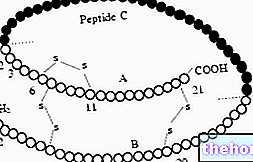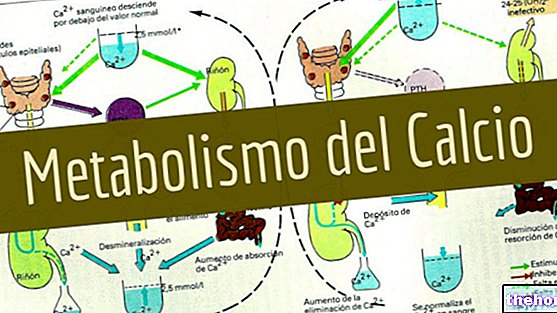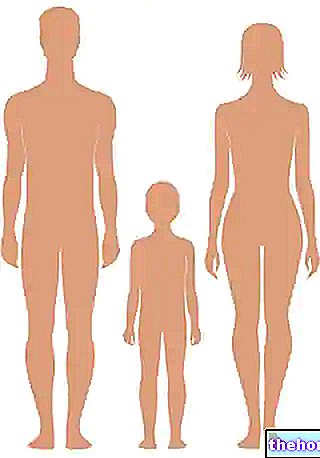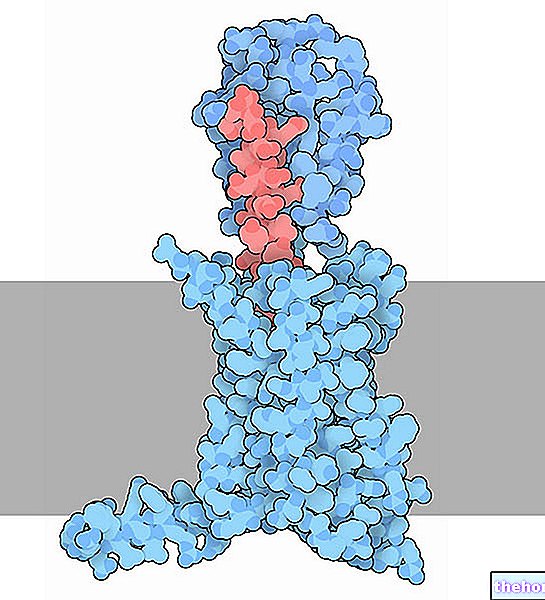If a cell works in anaerobic conditions, it produces energy by converting glucose into lactate and, through the Cori cycle, disposes of the latter; if there is oxygen available (therefore in resting conditions), more than 90% of glucose is consumed aerobically and only the remaining 10%, anaerobically. When there is a need for more ATP than what the aerobic pathway is able to provide (for example when muscles are under stress), then the additional supply is provided by anaerobic metabolism (we are in conditions of oxygen scarcity: shortness of breath, fatigue in breathing, etc.): it is necessary to speed up this metabolism by converting lactate (which is obtained from glycolysis) into glucose through gluconeogenesis.
Aerobic metabolism develops in the mitochondria.
The first enzyme encountered in aerobic metabolism is the pyruvate dehydrogenase; It is more correct to say that pyruvate dehydrogenase is an enzymatic complex rather than an enzyme, since it is an aggregate of 48-60 protein units with three catalytic sites acting in succession.
Pyruvate dehydrogenase catalyzes the following reaction (redox):
Pyruvate + NAD + + CoA-SH → Acetyl CoA + NADH + H + + CO2
CoA-SH is coenzyme A: it is a derivative of pantothenic acid; acetyl coenzyme A is a thioester. This is a redox process because the first carbon of pyruvate goes from oxidation number three to oxidation number four (it oxidized) and the second carbon of pyruvate goes from oxidation number two to oxidation number three (it oxidized) . Then the pyruvate is oxidized (it loses two electrons altogether) and the NAD is reduced.
As mentioned, pyruvate dehydrogenase has three types of enzymatic activity, each supported by its own catalytic cofactor:
- thiamine pyrophosphate (it is a derivative of vitamin B1); it is active in deprotonated form: a carbanion is formed.
- lipoamide (it is a derivative of lipoic acid); it contains a very reactive disulfide bridge.
- flavin adenin dinucleotide (it is a derivative of vitamin B2); it is a nucleotide with redox properties: its redox center is made up of the flavin.
In eukaryotic cells, aerobic metabolism occurs in specialized organelles of the cell which are the mitochondria; in bacteria the metabolism of glucose and other species occurs in the cell but there are no specialized organelles.
When pyruvate enters a mitochondrion, it is subjected to the "action of pyruvate carboxylase if there is a need to do gluconeogenesis (to reconstruct the starting material), or it can be subjected to pyruvate dehydrogenase if it is necessary to produce energy: the" acetyl coenzyme A which is formed by aerobic metabolism stimulates the action of pyruvate carboxylase, therefore, it promotes gluoconeogenesis and reduces the action of pyruvate dehydrogenase.
Let's now see how pyruvate dehydrogenase works; first of all, there is a decarboxylation of pyruvate by the action of thiamine pyrophosphate.
An acidic environment can inhibit aerobic metabolism because the anionic form of thiamine pyrophosphate is active which would be protonated at acidic pH and decarboxylation would not occur.
A decarboxylation is a difficult reaction since a carbon-carbon bond has to be broken; in this case the reaction is thermodynamically favored by the fact that the reaction intermediate (hydroxyethyl-thiamine pyrophosphate) gives resonance (the p-electrons of the molecule are delocalized): the hydroxyethyl-thiamine pyrophosphate exists in three possible forms (of resonance) and this makes it quite stable. Furthermore, the hydroxyethyl-thiamine pyrophosphate in anionic form survives for a long enough time to be able to interact with the disulfide bridge of the lipoamide (second catalytic cofactor of pyruvate dehydrogenase); the disulfide bridge is an oscillating arm (it is located at the end of a long flexible chain) and can move from one catalytic site to another in the enzyme complex.
Then the lipoamide, through the disulfide bridge, binds the hydroxyethyl-thiamine pyrophosphate: acetyl lipoamide is obtained. The one just described is the first phase of a transacetylation reaction catalyzed by the first enzyme of the pyruvate dehydrogenase complex; broken a bond between the hydroxyl group and thiamine pyrophosphate which returned to its original form: a redox reaction took place in which the disulfide bridge acted as an oxidant (the two sulfur atoms reduced) towards the hydroxyl group which it oxidized to acetyl.
After this phase, the oscillating arm of the lipoamide moves and approaches the second enzyme of pyruvate dehydrogenase which carries out the true transacetylase activity by carrying the acetyl group with it: the second phase of the transacetylation reaction catalyzed by the second enzyme takes place; in this way we have obtained acetyl coenzyme A. It is now necessary to restore the lipoamide which is in reduced form: the third enzyme of pyruvate dehydrogenase intervenes which redoxes the lipoamide and transfers its electrodes to the FAD which is reduced to FADH2. The couple FAD / FADH2 can function as a redox pair in two distinct monoelectronic stages or in a single bielectronic stage.
The FADH2 immediately gives its electrons to the NAD + obtaining FAD and NADH + H +.
Acetyl coenzyme A, obtained as described, is the starting product for the Krebs cycle (or cycle of tricarboxylic acids).
















.jpg)











